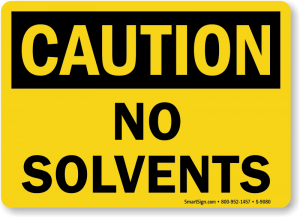Solvent Use in Parylene Deposition
Posted by Sean Horn
Friday, May 26, 2017 7:32
@ 7:32 AM
For various reasons, even people familiar with the variety of existing conformal coatings, their strengths, weaknesses and respective use often assume that the chemical vapor deposition (CVD) process used for parylene films incorporates a solvent, as an integral component of the procedure. This is false, for the reasons detailed below.

Parylene Deposition
Parylenes are polymers capable of providing resilient, dielectric, micron-thin conformal coatings for an exceptional variety of products and purposes. Their unique CVD application process deposits vaporous parylene deep into a substrate’s surface on a molecule-by-molecule basis, generating a pinhole-free protective film that conforms to all underlying contours, regardless of shape or position. Polymerization for parylene does not terminate chain growth during the process. This is unlike liquid coatings, where monomer and initiator are dissolved in water or an appropriate solvent, conditions that expedite the removal of heat.
Despite the misconceptions alluded to above, parylene CVD occurs without the use of a solvent; similarly, no by-product is produced. This is true despite the fact that poly-para-xylylene (parylene) was initially observed as the product of pyrolysis — vacuum thermal decomposition — of the common solvent, para-xylene. The connection between parylene’s origin from solvent source para-xylene may explain why some people assume solvent usage is critical for successful CVD.
In truth, parylene is chemically inert, possessing exceptional chemical resistance, despite the specialized chemical vapor deposition process required for substrate application. CVD generates deposited films that are chemically resistant and truly conformal to the assembly’s external configurations, without introduction of a solvent into the CVD process. The coatings produced possess good mechanical and electrical properties.
No Solvent Required
A product of green polymer chemistry, which minimizes the use and generation of hazardous substances, parylene deposition uses the Gorham Process for CVD. During application, the deposition of parylene is:
- self-initiated (no initiator needed),
- and un-terminated (no termination group is needed),
- with no solvent or catalyst required;
- conducted in a vacuum, the process does not yield any by-products.
Because parylene CVD uses no solvent, comonomer miscibility and the existence of a common solvent is not a requirement.
Conclusion
CVD is a versatile technique for fabricating high-quality, reliable conformal films and structured surfaces in the nanometer regime, from the vapor phase. Liquid-phase deposition methods cannot be safely applied to a wide range of vulnerable substrates and may often degrade the organic device when a solvent directly contacts them. Solvent surface-tension with liquid-phase coatings interferes with their use for MEMS/nano applications, a condition that does not affect parylene. Although parylene CVD is more time-consuming and costly, it avoids the process hazards of liquid-phase coatings such as acrylic, epoxy, silicone and urethane. Solvent-free synthesis for parylene polymerization occurs in controlled vacuum environments; in addition to the absence of solvents, no leachables, plasticizers, or catalyzers are used. Despite its cost and time issues, CVD is convenient because it is simple, solvent-free, and low temperature.
To learn more about solvents and parylene, download our whitepaper:
{{cta(‘67972768-ab7a-4367-83ee-db9ddf93913c’)}}
Comments
Homepage 4/17/2020. 10:17:10 AM
... [Trackback] [...] Informations on that Topic: blog.paryleneconformalcoating.com/whats-the-difference-between-potting-and-conformal-coating/ [...]

londondrugscanada.bigcartel.comlondon-drugs 4/17/2020. 10:17:10 AM
cialis uk https://londondrugscanada.bigcartel.com/london-drugs This is nicely expressed. !